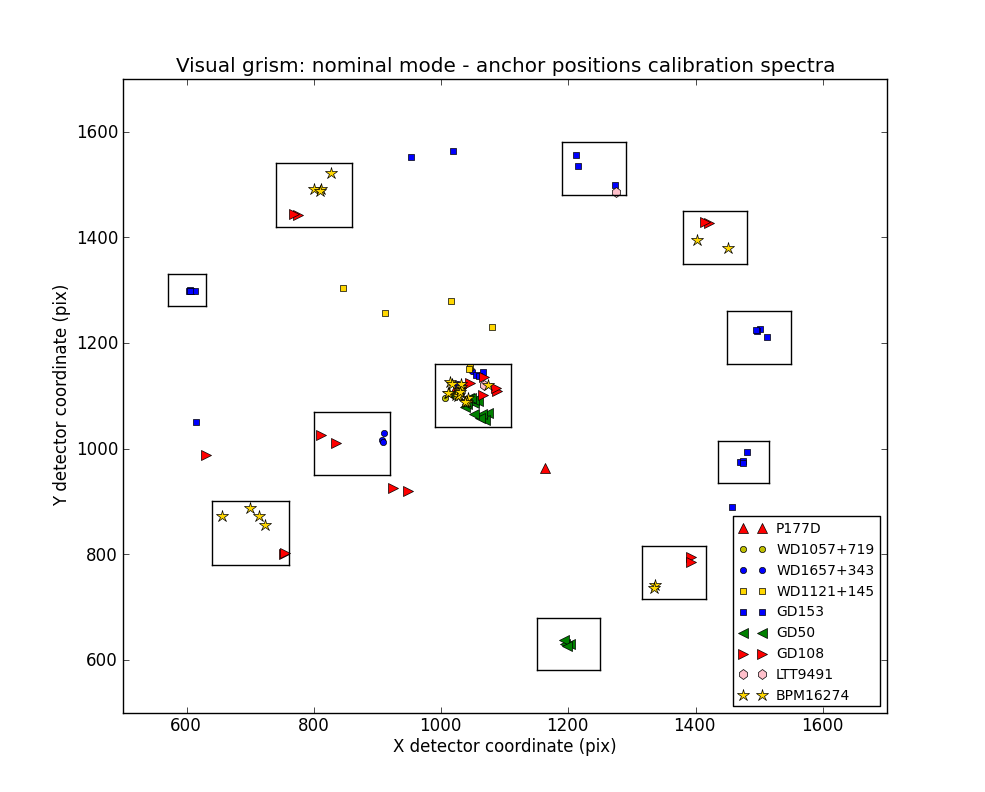Verification of the flux calibration in the visual grism: nominal mode¶
Overview¶
The new v-grism flux calibration is valid over the whole
detector, and makes also a correction for coincidence-loss.
The first integrated software version is UVOTPY-0.9.7.3.
With the choice of data, we have an independent set from the spectra used to construct the effective area. Of course, spectra from the same targets are used.
Method¶
Calibration spectra that were not used in the flux calibration are reprocessed using the new flux calibration and then compared to the known stellar flux. The spectra for verification are located on the detector between the areas with the spectra used to determine the effective areas for the flux calibration.
Data used for verification¶
The approximate location of the anchor of the spectra, their
obsid, and number of the fits extension is listed.
First the cool stars are listed, followed by the hot white dwarfs.
WD1121+145 spectra
| anchor | obsid |
ext |
% err | plot | aspect correction |
|---|---|---|---|---|---|
| 845,1304 | 00055250072 | 2 | 20 | WD1121+145 Figure 1 | None |
| 912,1256 | 00055250072 | 3 | 20 | WD1121+145 Figure 2 | None |
| 1015,1280 | 00055250072 | 4 | 15 | WD1121+145 Figure 3 | None |
| 1080,1230 | 00055250072 | 1 | 15 | WD1121+145 Figure 4 | None |
GD108 spectra
| anchor | obsid |
ext |
% err | plot |
correction |
|---|---|---|---|---|---|
| 631, 989 | 00055050016 | 1 | 20 | GD108 Figure 1 | yes |
| 924, 924 | 00055051003 | 1 | 20 | GD108 Figure 2 | yes |
| 949, 920 | 00055050012 | 1 | 20 | GD108 Figure 3 | yes |
GD153 spectra
| anchor | obsid |
ext |
% err | plot | aspect correction |
|---|---|---|---|---|---|
| 615,1050 | 00055501004 | 1 | 15 | GD153 Figure 1 | yes |
| 952,1550 | 00055502008 | 1 | 10 | GD153 Figure 2 | yes |
| 1019,1563 | 00055502004 | 1 | 20 | GD153 Figure 3 | yes |
| 1456, 889 | 00055503020 | 1 | 10 | GD153 Figure 4 | yes |
Result of the verification¶
Errors were read off the figures as being typical. The errors are typically 20% or less. For a large part these are due to inaccuracy in the coincidence loss correction and the Poisson error in the counts.



